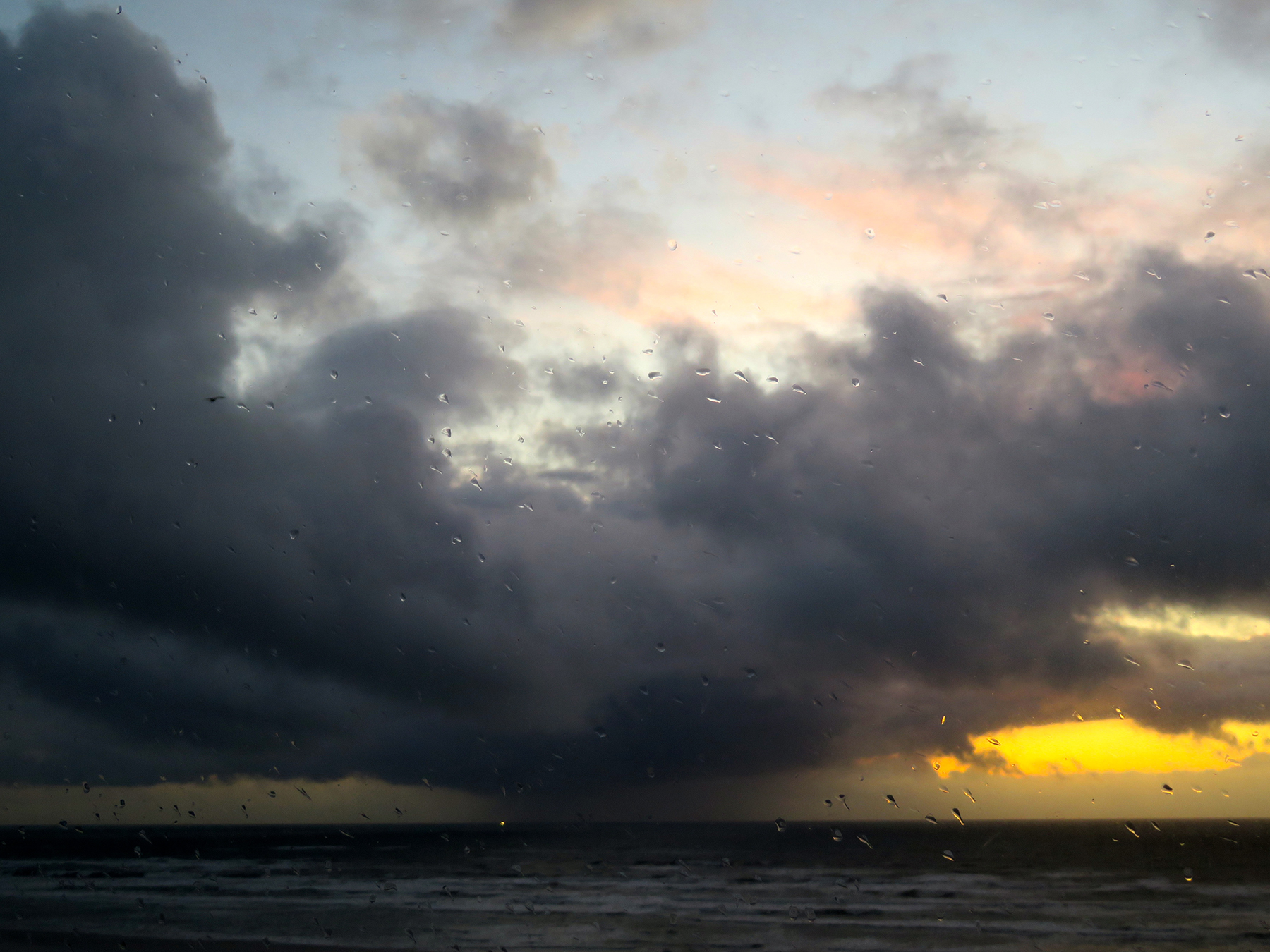Here are some skies. The painted ones reflect the landscape of Northern Germany, up at the North Sea. The photographed ones were all taken while looking at the Pacific, a century later. I loved the painter, Emil Nolde (1867 – 1956), for much of my early life, being drawn to the color work, his expressionism, an unmatched intensity in his paintings – and the myth that he was the courageously resisting victim of Nazi terror, re-told in a famous novel by Siegfried Lenz, The German Lesson.

1946–1947

I am still fascinated by the evocativeness of his colorization, the way it makes me ask is this really how the maritime sky looks? Indeed, it does! But everything else has collapsed, the beliefs that were so carefully instilled in post-war Germany, and the admiration that had been based on false premises.


Nolde was a man who was energetically and successfully building legends around his status as an artist, from day one. He was the misunderstood genius, the martyr at the hands (depending on the era in question) of the Jewish cabal dominating the art market who would not allow a true, pure nordic German to be successful, or at the hands of the Nazis who suppressed his art.


As it turns out, he was an ardent National Socialist himself (as was his wife Ada), a virulent anti-Semite, who even after the war did not change autobiographical writings depicting his loathing for Jews, and who stopped painting religious motifs because he could no longer stand painting “Jews.” Letters from him to Goering and Hitler contained suggestions as to how to rid Germany of “that race.” His subject matter shifted over to painting Vikings and other nordic mythology in the belief he could this way participate in forming the national-socialist art canon.


In 1933 he admired the writings of fascist Julius Langbehn (Rembrandt as Educator) who claimed that “a pure German art was needed to counteract modernist malaise. He deplored internationalism, mass culture, big city life, argued against specialization, knowledge, a culture of enlightenment, and called for a return to an education of the heart, based on character and individualism, the root of all German art.” Nolde loved this image of a national redeemer, the artist as a German quasi-religious idol. His unmet craving for recognition morphed into a sense of mission that he saw matched by the Führer’s plans. Alas, the admiration was not mutual. Hitler was rejecting the modernism exhibited by Nolde and assigned some of his work to the degenerate art exhibitions (soon to be removed from them by some high-up Nolde admirers in the 3rd Reich administration.) He was, however, sanctioned not with a prohibition to paint (as his later legend has it) but by restrictions on his possibility to freely seek and/or exhibit his art.


After the war Nolde carefully crafted the story of himself as a secret resister, having painted 1000s of small works (the unpainted pictures) while being checked on by the Gestapo (a lie.) The paintings date back to almost a decade before he was told to desist sales, and include topics that expressed alliance to the Nazi cause. Here is the interesting thing: much of German society was all too eager to join into this myth building, desperately needing a collective moral saga that matched each person’s need to absolve themselves from accusations of conformity if not collaboration, showing a way out: they had all gone into some kind of inner emigration. The Foundation archiving his work refused all access to incriminating written materials, benefitting from the myth making themselves. Nolde became a figure of cultural identification in post-war Germany, where clean heroes were desperately needed to regain a sense of identity and self-esteem. He was deemed the modern martyr who relentlessly served his art, regardless of defamation and persecution, helping people to redefine their own roles during the 3rd Reich.

circa 1930-1935

Last year saw the first comprehensive revision of the legend around this painter at a retrospective exhibition in Berlin, with a catalogue exploring the true history. The Nolde foundation is now under new leadership and fully participant in the research efforts.
Here is a fabulous review that offers more detail.
Music today from another Northern-born German, Johannes Brahms. No conflict between self presentation and content here, or between his art and his identity. Sigh of relief.





sls
What a story! And what skies!